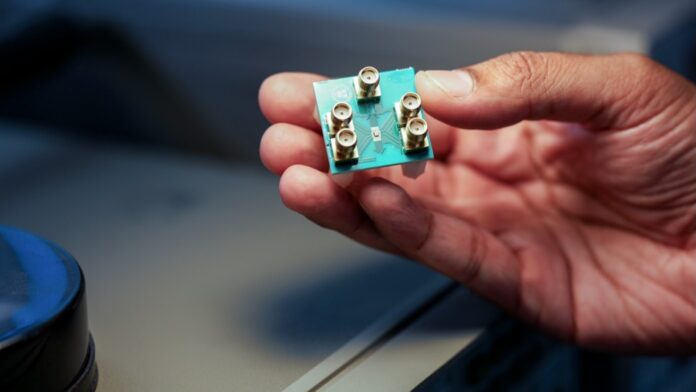Scientists have achieved a groundbreaking feat in computer technology: creating the world’s first fully functional microwave-powered chip capable of surpassing conventional CPUs in both speed and energy efficiency. This innovative “microwave brain” leverages microwaves, operating within the analog spectrum, to perform complex computations, marking a significant departure from traditional digital circuitry.
This new approach holds immense potential for high-bandwidth applications like radar imaging, which demand rapid processing capabilities. Microwaves excel in this domain due to their ability to handle vast swaths of data simultaneously across a wide range of frequencies.
How the Microwave Chip Works: Harnessing Analog Waves and Neural Networks
At its core, the chip utilizes an artificial intelligence (AI) neural network structured with interconnected electromagnetic nodes within tunable waveguides. These nodes manipulate microwave waves in the form of analog signals. The waves are structured in a comb-like pattern, with regularly spaced spectral lines acting as a precise frequency ruler. This allows for incredibly fast and accurate frequency measurements.
This “microwave brain” mimics the structure and function of the human brain through interconnected nodes that learn and adapt by identifying patterns within data streams. The chip operates using a probabilistic approach – instead of relying on rigid digital logic, it leverages probabilities to process information. This unconventional method significantly improves both speed and accuracy compared to traditional digital computing models.
A Quantum Leap in Processing Power and Efficiency
Testing demonstrated the chip’s impressive capabilities. It successfully tackled complex tasks like recognizing binary sequences and analyzing high-speed data streams with an 88% accuracy rate across various wireless signal classification challenges. Remarkably, it achieves a processing speed of tens of gigahertz (at least 20 billion operations per second), outpacing the typical CPU clock speeds found in most home computers (between 2.5 and 4 GHz).
This superior performance comes with a significant energy advantage. The chip consumes less than 200 milliwatts – on par with the transmit power of a mobile phone – while traditional CPUs typically require at least 65 watts to function. This low power consumption opens exciting possibilities for integrating the chip into everyday devices like smartphones and wearables, as well as powering edge computing applications that demand real-time processing without relying on distant data centers.
This advancement also has far-reaching implications for AI development, offering a highly efficient solution for training complex AI models with reduced energy demands.
While further research is needed to refine the design and reduce the chip’s size, this breakthrough heralds a new era in computing, one defined by speed, efficiency, and potential applications that extend far beyond traditional boundaries.
